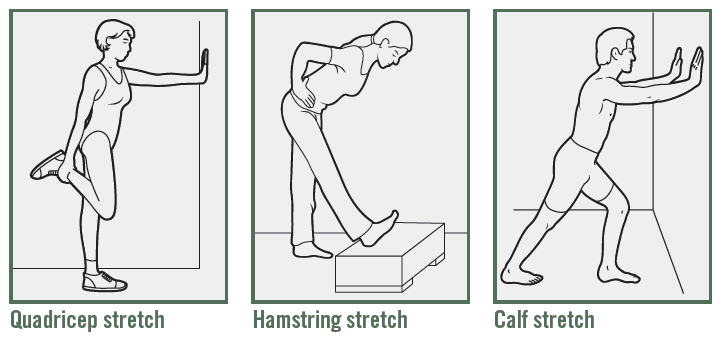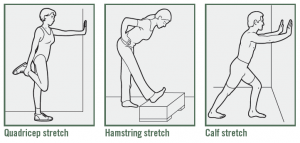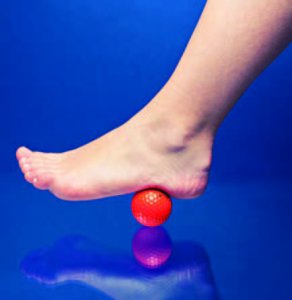by Ivan | Apr 2, 2019 | Healthy Aging, Patient News, Staying Active

Ramping Up your Sprint Fitness after a Long, Sedentary Winter
Whether you went into hibernation as the result of a record cold winter season, or took time off from your usual exercise routine because of a busy schedule or illness, spring is an ideal time to get back in action. When done with care, starting or rebooting your fitness regimen this spring will set you up for a vibrant, energetic summer. After being cleared for exercise by our office, consider these issues to ensure you’re not sidelined by injury, fatigue or boredom and get the most out of your spring fitness efforts
Aerobic or strengthening exercise?
Both. According to the 2018 Physical Activity Guidelines for Americans, any amount is helpful but the recommendations to help prevent chronic diseases is 150 minutes of moderate-intensity or 75 minutes of vigorous-intensity, aerobic activity is recommended each week, and muscle-strengthening activities (free weights or resistance bands) two or more days a week. It would be ideal for older adults to add balance training to the mix. If it’s challenging to find long periods of time to exercise, note that three 10-minute bouts or one 30-minute bout will deliver equal improvements in fitness.
Stretch before or after exercise?
Before, after or both can all work well, if done properly. Do not attempt long stretches beforehand when your muscles are cold and you’re likely to pull a tendon, cautions Christine Butz, Doctor of Physical Therapy at Athletico. Instead, take 10 minutes to pedal on a stationary bike, march in place or walk around. Post exercise is the time for long, 30-second stretches that help you slowly increase muscle length (see below for examples). Most importantly, don’t push through pain, says Butz. “If you experience sharp, persistent pain, or have difficulty moving through a full range of motion, stop and see a physician to determine if it’s a strain, tear or fracture.”

Steady state or interval training?
Once the bastion of elite athletes, interval training can be used at any level, according to Mayo Clinic. Simply alternate short bursts (approximately 30 seconds) of intense activity with longer intervals (three to four minutes) of less intense activity. For instance, if your exercise is walking, try incorporating a brief surge of jogging into your regular walks or alternate leisurely strolling with periods of brisker walking. As your cardiovascular fitness improves, you’ll be able to exercise longer or with more intensity during your spring fitness routine.
What are the best activities to try?
Tap into one of these fitness trends to reinvigorate your workouts:
- Starting with Jazzercise in the 1980s, and rising again in the 2000s with Zumba, both of which remain popular, numerous dance-centric classes are offered at health clubs and park districts – Broadway show routines, tap dancing, belly dancing, Irish dancing, square dancing, line dancing and ballet-inspired barre workouts. Interesting note: a number of studies are in progress exploring the possible benefits of dance in enhancing cognitive function and reducing stress.
- Indoor cycling classes such as SoulCycle, Flywheel and CYC provide a fast-paced, high-energy environment. If you prefer to stay outdoors, but feel a bit unsteady on a 10-speed racer, check out the proliferation of classic cruiser bikes featuring wide, comfortable seats and upright handlebars.
- Yoga and Pilates. Both are low-impact workouts that focus on using bodyweight resistance. Yoga builds strength, balance (ideal for preventing falls) and harmony in mind and body, with breathing exercises, meditation and postures (asana or poses) that stretch and flex various muscle groups. Pilates is excellent for improving core strength and recovering after injury.
- Water classes are another low-impact option to build core muscles and help improve flexibility, stability and balance. Choices include traditional aqua aerobics as well as aqua ballet, aqua yoga and aqua tai chi.
- Functional Training classes are designed to improve balance, coordination, agility, speed and strength, such as BOSU (both sides utilized) ball workouts.
The post Spring Fitness appeared first on Specialdocs Consultants.
by Specialdocs Consultants, LLC | Nov 20, 2017 | Patient News, Staying Active

Every step you take is a physiological marvel, made possible by the 26 bones, 33 joints and over 100 ligaments of the foot working together to ensure maximum movement. The intricate sequence begins as your heel hits the ground, and ends with a push off the big toe at the same time the Achilles tendon lifts the heel, requiring a force that is about 50 percent greater than your body weight. Now consider that during a typical day, people spend about four hours on their feet and take 8,000 to 10,000 steps – that means the feet support a combined force equivalent to several hundred tons every day.
While feet were designed to propel you through life with powerful ease, many factors can affect function. Age, obesity, long periods of standing, certain diseases such as diabetes, some types of exercise, faulty foot mechanics, overuse or misuse of muscles, even ill-fitting shoes, result in pain that can sideline even the most determined walker. However, today’s treatment of choice – a combination of non-invasive measures and time – will get most people back on their feet without the complications of surgery.
Plantar Fasciitis, the most common cause of foot pain. Although it is known as jogger’s heel, there are multiple causes of plantar fasciitis, responsible for one million visits to the physician each year. Exercise such as dance and aerobics can contribute to plantar fasciitis, as can being flatfooted or having a high arch, carrying extra weight, or working in an occupation that requires frequent standing or walking on hard surfaces. The plantar fascia is a band of tissue from the heel to the ball of your foot that supports your arch like a bowstring; too much tension on it creates small tears. Repetitive stretching and tearing causes the fascia to become inflamed and irritated, and results in a stabbing pain felt most acutely in the morning or after any period of inactivity.
Physical therapy can help relieve the pain, which is often aggravated by tight muscles in your feet and calves. Exercises to stretch the plantar fascia and Achilles tendon and strengthen lower leg muscles are often prescribed initially. Notably, one of the most effective treatments for plantar fasciitis may also be the simplest. Patients who tried slowly raising and lowering the affected heel while standing barefoot on a stair or a box, 12 times every other day, reported a vast improvement in pain and disability in three months, compared with those who adhered to a standard regimen of pulling toes toward the shins several times daily. When performing that exercise, it is best to roll a hand towel and place it under the toes to increase the amount of flexion.
In addition to therapy, other conservative measures are recommended initially, including:
- avoid flat shoes and barefoot walking
- cut back on activities that may aggravate the
- condition (running, dancing, jumping)
- over-the-counter silicone heel shoe inserts
- short-term trial of anti-inflammatory drugs
Plantar fasciitis can persist, however, and additional treatment may include:
- single glucocorticoid (cortisone) injection
- molded shoe inserts (orthotics) or arch supporting shoes
- night splints
- cushioned walking boot
Fancy Footwork: Expert Advice to Keep You on Your Toes
Preventive stretching. Add conditioning exercises to your daily routine, such as rolling your foot over a golf ball for a few minutes to work the plantar fascia ligament, or tracing the letters of the alphabet with your feet. Wrap a TheraBand (a resistance tool) around the sole of your foot while sitting on the floor with your legs straight out in front, and flex and point.
Size check. The size of your foot can change over time, especially in women whose feet become longer and wider after pregnancy. Ask for a professional measurement the next time you shoe shop.
Find the right fit. Too-tight shoes weaken the muscles in the ball of the foot and the ligaments that hold the toes straight, causing corns, ingrown nails and bunions. Make sure your shoe is roomy enough to provide a finger’s breadth between its tip and your big toe.
Stand tall, naturally. High heels are the most common cause of foot pain among women, leading to corns, calluses, bunions and neuromas (pinched nerve or nerve tumor). Choose shoes broad in the toes, with a low wedge and shock absorbent sole.
The good news: almost 90 percent of patients with plantar fasciitis will improve within 10 months of starting simple treatment methods, say experts.
The post Thinking on Your Feet: The Latest on Warning Signs from Below appeared first on Specialdocs Consultants.




Recent Comments